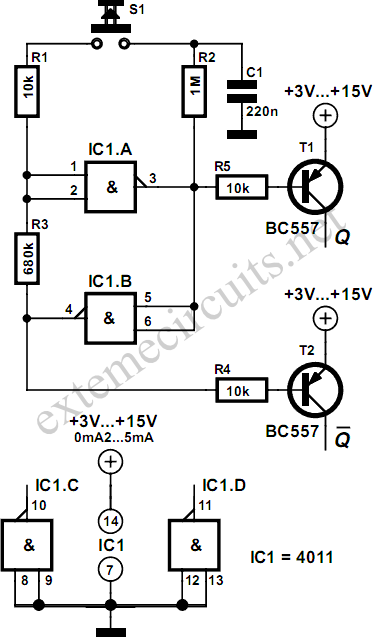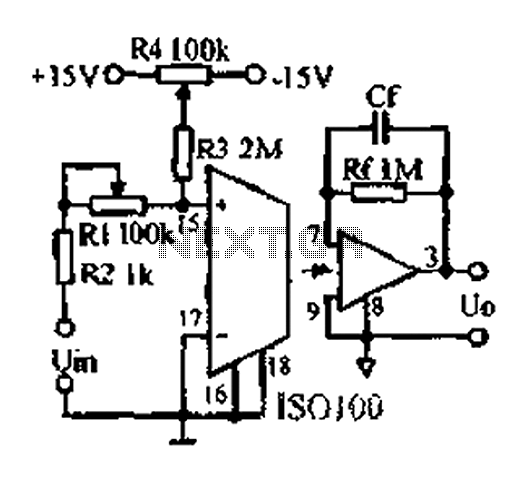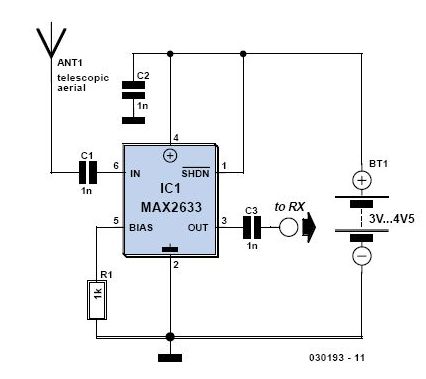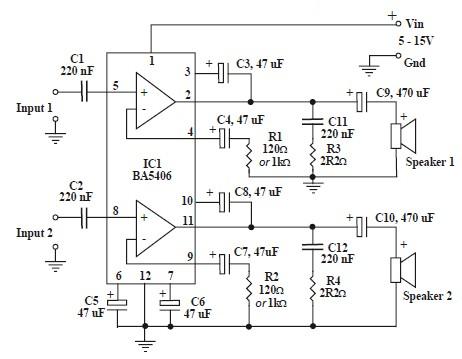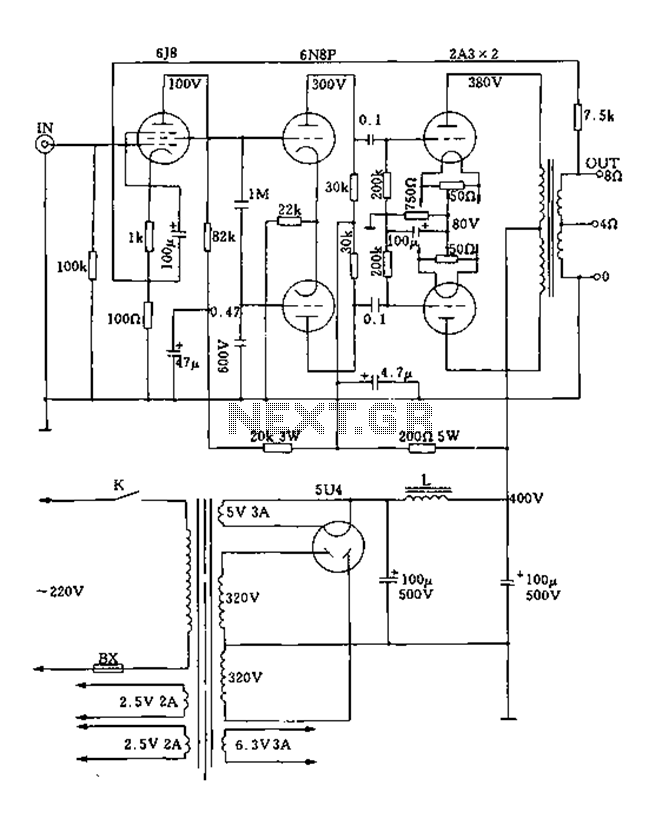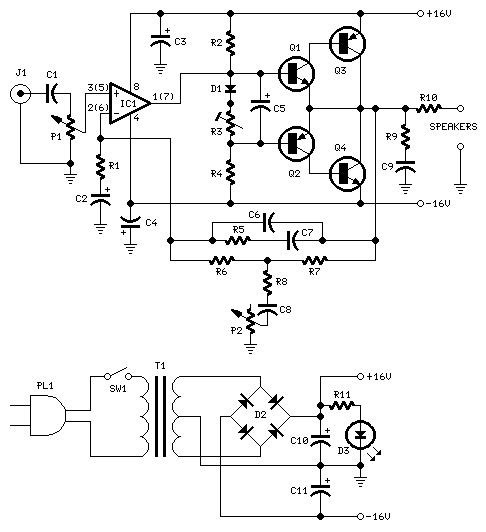
audio amplifier using ic lm4780
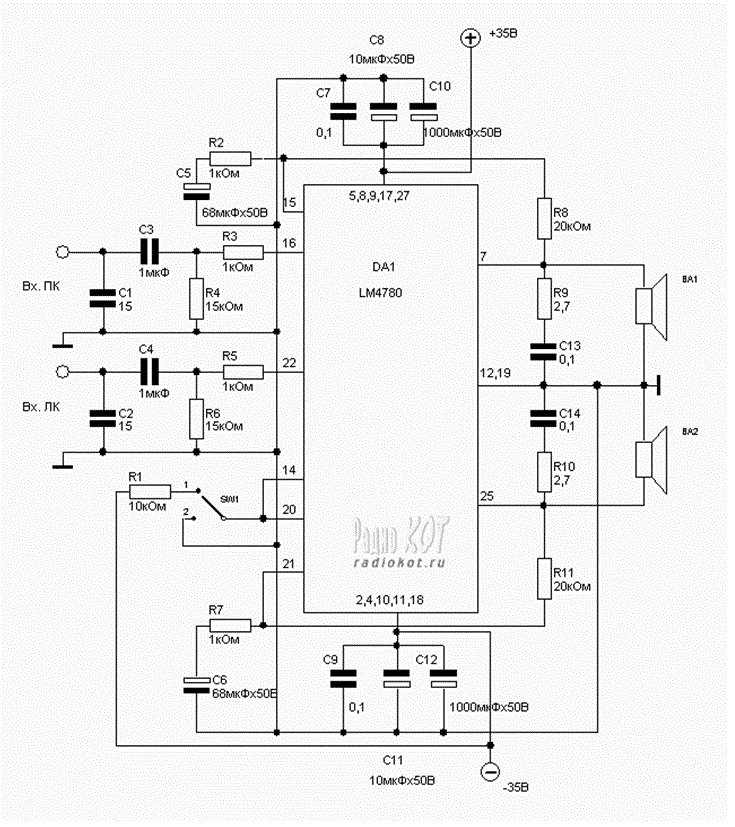
Explore the power amplifier integrated circuit from National Semiconductor, the LM4780. What is noteworthy about this component is its very low harmonic distortion. Typically, manufacturers specify the maximum power of their products with a harmonic content of around 10%. However, for this particular chip, the specified maximum power features a harmonic content of only 0.5%. This makes it one of the most reliable options available. The chip implements two identical amplifier channels and is designed for use in stereo amplifiers. Additionally, the circuit can operate in mono mode when configured in a bridge setup, allowing for a power output of 120 watts at a harmonic distortion of 0.5%. Other features of the chip remain largely unchanged.
The LM4780 power amplifier integrated circuit is designed for high-fidelity audio applications, making it suitable for both consumer and professional audio equipment. It incorporates two identical amplifier channels, which can be used separately for stereo applications or combined in a bridge configuration for higher output power in mono applications.
The low harmonic distortion of 0.5% at maximum power output is a significant advantage, as it ensures that the audio signal remains clean and faithful to the original source. This characteristic is particularly valuable in high-end audio systems where sound quality is paramount.
The chip operates with a supply voltage of ±25V, providing ample headroom for driving speakers with various impedance ratings. The output power capability of 120 watts in bridge mode allows it to drive larger speakers or subwoofers effectively, making it a versatile choice for audio amplifiers.
In terms of design, the LM4780 features built-in thermal overload protection and short-circuit protection, enhancing its reliability and longevity in various operating conditions. The device is housed in a standard package, which simplifies integration into custom circuit designs.
Overall, the LM4780 is a robust choice for audio amplification, delivering excellent performance with minimal distortion, making it a preferred option among audio engineers and hobbyists alike.Explore power amplifier integrated circuit from National Semiconductor LM4780. What`s so special Well, first of all - a very low harmonic distortion. In general, manufacturers indicate the maximum power of his ingenious craft regularly with the harmonic content of 10%. At the same chip, CT in the specified maximum power is only 0. 5%! Therefore, i t is the most honest of all mikruha`ve found. The chip implements two identical amplifier channels and features are given for the stereo amplifier. Circuit can also operate in mono - the inclusion of the bridge. In this case, the power output at CT = 0. 5% of 120 watts. Other features remain virtually unchanged. 🔗 External reference
The LM4780 power amplifier integrated circuit is designed for high-fidelity audio applications, making it suitable for both consumer and professional audio equipment. It incorporates two identical amplifier channels, which can be used separately for stereo applications or combined in a bridge configuration for higher output power in mono applications.
The low harmonic distortion of 0.5% at maximum power output is a significant advantage, as it ensures that the audio signal remains clean and faithful to the original source. This characteristic is particularly valuable in high-end audio systems where sound quality is paramount.
The chip operates with a supply voltage of ±25V, providing ample headroom for driving speakers with various impedance ratings. The output power capability of 120 watts in bridge mode allows it to drive larger speakers or subwoofers effectively, making it a versatile choice for audio amplifiers.
In terms of design, the LM4780 features built-in thermal overload protection and short-circuit protection, enhancing its reliability and longevity in various operating conditions. The device is housed in a standard package, which simplifies integration into custom circuit designs.
Overall, the LM4780 is a robust choice for audio amplification, delivering excellent performance with minimal distortion, making it a preferred option among audio engineers and hobbyists alike.Explore power amplifier integrated circuit from National Semiconductor LM4780. What`s so special Well, first of all - a very low harmonic distortion. In general, manufacturers indicate the maximum power of his ingenious craft regularly with the harmonic content of 10%. At the same chip, CT in the specified maximum power is only 0. 5%! Therefore, i t is the most honest of all mikruha`ve found. The chip implements two identical amplifier channels and features are given for the stereo amplifier. Circuit can also operate in mono - the inclusion of the bridge. In this case, the power output at CT = 0. 5% of 120 watts. Other features remain virtually unchanged. 🔗 External reference
Warning: include(partials/cookie-banner.php): Failed to open stream: Permission denied in /var/www/html/nextgr/view-circuit.php on line 713
Warning: include(): Failed opening 'partials/cookie-banner.php' for inclusion (include_path='.:/usr/share/php') in /var/www/html/nextgr/view-circuit.php on line 713
